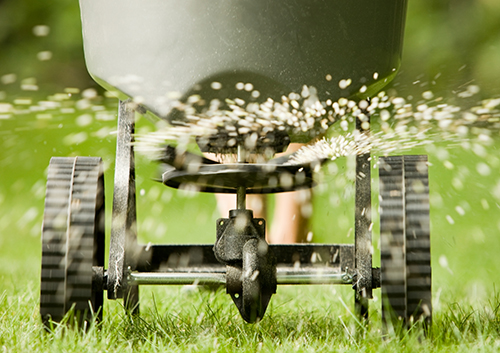Understanding Fertilizer Numbers
Jul 05, 2022

For new farmers and gardeners, the amount of fertilizer options in your local farm store or nursery can be overwhelming. There are often a variety of brands, types, and grades crowding the shelves, each with a specific purpose in mind.
Similar to how you might inspect the nutrition information labels on the food you eat, it’s important to do the same when determining your fertilizer’s nutritional value for plants. The most important information is contained in three numbers that are prominently displayed on the front of the package. So, what do these three, bold numbers on your fertilizer bag mean?
While the numbers in the ratio may vary, such as 5-10-10 or 6-6-18, they represent the same set of macronutrients, called the NPK ratio. The “N” stands for nitrogen, the “P” stands for phosphorous, and the “K” stands for potassium.
The three numbers in the ratio represent the percentage of each element, by weight, inside the package. For example, a package of 24-0-6 fertilizer contains 24% nitrogen, 0% phosphorus, and 6% potassium. To find the number of pounds in each bag that this percentage corresponds to, simply multiply the bag’s weight (i.e., 40 pounds) by the percentage of each nutrient. A 40-pound bag of fertilizer would therefore contain 9.6 pounds of nitrogen, zero pounds of phosphorus, and 2.4 pounds of potassium. The rest is likely a filler such as sand or limestone, which makes the fertilizer easier to spread.
The NPK ratio provides clues as to which fertilizer to choose. Nitrogen promotes green, leafy growth, and higher concentrations are best used for leafy vegetable plants such as spinach and lettuce. Phosphorus promotes strong root growth and is useful in encouraging fruit and flower production. This macronutrient is especially important for root crops such as carrots, onions, and beets. Potassium influences a plant’s heartiness and vigor, improving stress tolerance of the plant, and is used in higher concentrations for fruit trees, rose bushes, and root vegetables.
All-purpose fertilizers often have a NPK of 10-10-10 or 13-13-13, but the concentrations will need to be adjusted for specific scenarios. The best way to determine the correct fertilizer grade for your property is to first have your soil tested. Your local Co-op offers this service and will give you a fertilizer recommendation based on the soil test report. Call or stop by the store to set up an appointment.
For more content like this, check out the latest issue of the Cooperator.
Similar to how you might inspect the nutrition information labels on the food you eat, it’s important to do the same when determining your fertilizer’s nutritional value for plants. The most important information is contained in three numbers that are prominently displayed on the front of the package. So, what do these three, bold numbers on your fertilizer bag mean?
While the numbers in the ratio may vary, such as 5-10-10 or 6-6-18, they represent the same set of macronutrients, called the NPK ratio. The “N” stands for nitrogen, the “P” stands for phosphorous, and the “K” stands for potassium.
The three numbers in the ratio represent the percentage of each element, by weight, inside the package. For example, a package of 24-0-6 fertilizer contains 24% nitrogen, 0% phosphorus, and 6% potassium. To find the number of pounds in each bag that this percentage corresponds to, simply multiply the bag’s weight (i.e., 40 pounds) by the percentage of each nutrient. A 40-pound bag of fertilizer would therefore contain 9.6 pounds of nitrogen, zero pounds of phosphorus, and 2.4 pounds of potassium. The rest is likely a filler such as sand or limestone, which makes the fertilizer easier to spread.
The NPK ratio provides clues as to which fertilizer to choose. Nitrogen promotes green, leafy growth, and higher concentrations are best used for leafy vegetable plants such as spinach and lettuce. Phosphorus promotes strong root growth and is useful in encouraging fruit and flower production. This macronutrient is especially important for root crops such as carrots, onions, and beets. Potassium influences a plant’s heartiness and vigor, improving stress tolerance of the plant, and is used in higher concentrations for fruit trees, rose bushes, and root vegetables.
All-purpose fertilizers often have a NPK of 10-10-10 or 13-13-13, but the concentrations will need to be adjusted for specific scenarios. The best way to determine the correct fertilizer grade for your property is to first have your soil tested. Your local Co-op offers this service and will give you a fertilizer recommendation based on the soil test report. Call or stop by the store to set up an appointment.
For more content like this, check out the latest issue of the Cooperator.